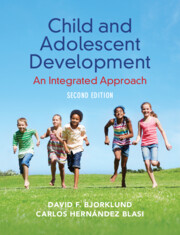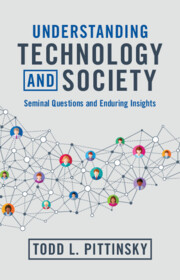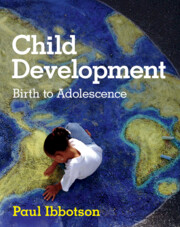Refine search
Actions for selected content:
179 results

Child and Adolescent Development
- An Integrated Approach
- Coming soon
-
- Expected online publication date:
- December 2025
- Print publication:
- 04 December 2025
-
- Textbook
- Export citation
Eating behaviour of early childhood from different perspectives in Brazil: the child himself and their caregivers and teachers
-
- Journal:
- British Journal of Nutrition , First View
- Published online by Cambridge University Press:
- 17 October 2025, pp. 1-9
-
- Article
- Export citation

Understanding Technology and Society
- Seminal Questions and Enduring Insights
-
- Published online:
- 30 September 2025
- Print publication:
- 10 July 2025
Unequal neighborhoods, unequal skills: Adaptive functioning and access to community resources
-
- Journal:
- Journal of the International Neuropsychological Society / Volume 31 / Issue 4 / May 2025
- Published online by Cambridge University Press:
- 14 July 2025, pp. 289-294
-
- Article
-
- You have access
- Open access
- HTML
- Export citation
8 - Do Children Develop Differently in a Digitally Saturated World? Is Digital Technology Helping Children Thrive – or Stunting Them?
-
- Book:
- Understanding Technology and Society
- Published online:
- 30 September 2025
- Print publication:
- 10 July 2025, pp 100-112
-
- Chapter
- Export citation

Child Development
- Birth to Adolescence
-
- Published online:
- 19 June 2025
- Print publication:
- 12 June 2025
-
- Textbook
- Export citation
Maternal and paternal alcohol consumption in the prenatal period and mental health and behavior of their children until adulthood
-
- Journal:
- European Psychiatry / Volume 68 / Issue 1 / 2025
- Published online by Cambridge University Press:
- 30 May 2025, e70
-
- Article
-
- You have access
- Open access
- HTML
- Export citation
The impact of perinatal exposure to paternal anxiety on offspring: A prospective study using the Avon Longitudinal Study of Parents and Children cohort
-
- Journal:
- Development and Psychopathology , First View
- Published online by Cambridge University Press:
- 26 May 2025, pp. 1-16
-
- Article
-
- You have access
- Open access
- HTML
- Export citation
Chapter 8 - Thyroid Physiology and Early Pregnancy
-
-
- Book:
- Early Pregnancy
- Published online:
- 16 April 2025
- Print publication:
- 08 May 2025, pp 70-80
-
- Chapter
- Export citation
Identifying biomarkers and trajectories of executive functions and language development in the first 3 years of life: Design, methods, and findings of the Germina cohort study
-
- Journal:
- Development and Psychopathology / Volume 37 / Issue 5 / December 2025
- Published online by Cambridge University Press:
- 05 March 2025, pp. 2457-2467
-
- Article
- Export citation
17 - Grounding Moral Psychology in Evolution, Neurobiology, and Culture
- from Part IV - Origins, Development, and Variation
-
-
- Book:
- The Cambridge Handbook of Moral Psychology
- Published online:
- 20 February 2025
- Print publication:
- 27 February 2025, pp 409-432
-
- Chapter
- Export citation
Task effects in children’s word recall: Expanding the reverse production effect
-
- Journal:
- Journal of Child Language , First View
- Published online by Cambridge University Press:
- 04 February 2025, pp. 1-13
-
- Article
-
- You have access
- Open access
- HTML
- Export citation
Meals, mealtimes and moments for learning: assessment of quality in early childhood education and care services
-
- Journal:
- Public Health Nutrition / Volume 28 / Issue 1 / 2025
- Published online by Cambridge University Press:
- 07 January 2025, e50
-
- Article
-
- You have access
- Open access
- HTML
- Export citation
Ages and Stages Questionnaires in the assessment of young children after cardiac surgery
-
- Journal:
- Cardiology in the Young / Volume 35 / Issue 1 / January 2025
- Published online by Cambridge University Press:
- 20 December 2024, pp. 144-151
-
- Article
-
- You have access
- Open access
- HTML
- Export citation
5 - Network Learning: Growing a Lexicon by Degrees
- from Part II - Language
-
- Book:
- Behavioral Network Science
- Published online:
- 08 November 2024
- Print publication:
- 19 December 2024, pp 75-86
-
- Chapter
- Export citation
5 - The Right Supports to the Right Students at the Right Time over Time: How Schools and Communities Can Make It Happen
- from Part Two - Prevention with Children and Youth
-
-
- Book:
- An Ounce of Prevention
- Published online:
- 14 November 2024
- Print publication:
- 28 November 2024, pp 85-106
-
- Chapter
- Export citation
Continuing the momentum of developmental psychopathology: Lessons learned from the seminal contributions of Dante Cicchetti
-
- Journal:
- Development and Psychopathology / Volume 36 / Issue 5 / December 2024
- Published online by Cambridge University Press:
- 22 November 2024, pp. 2051-2055
-
- Article
-
- You have access
- HTML
- Export citation
Introduction
-
- Book:
- ‘Unruly’ Children
- Published online:
- 31 October 2024
- Print publication:
- 14 November 2024, pp 1-35
-
- Chapter
- Export citation
Drooling in developmentally normal children: a review
-
- Journal:
- The Journal of Laryngology & Otology / Volume 138 / Issue 11 / November 2024
- Published online by Cambridge University Press:
- 15 November 2024, pp. 1061-1064
- Print publication:
- November 2024
-
- Article
- Export citation

‘Unruly’ Children
- Historical Fieldnotes and Learning Morality in a Taiwan Village
-
- Published online:
- 31 October 2024
- Print publication:
- 14 November 2024
